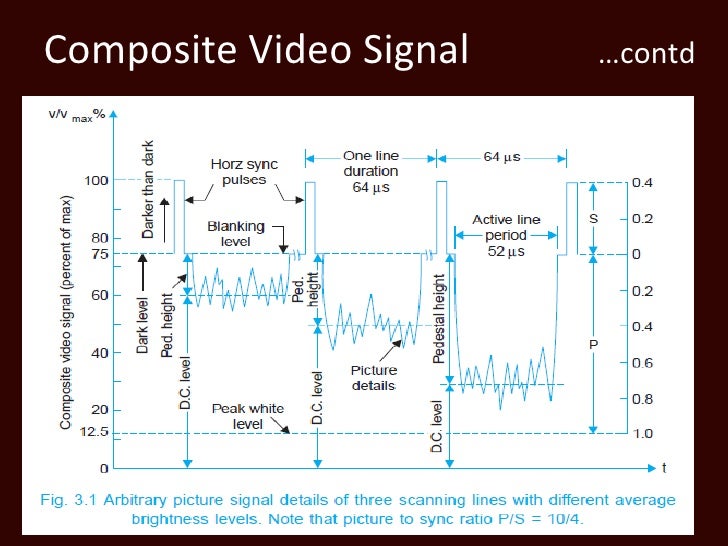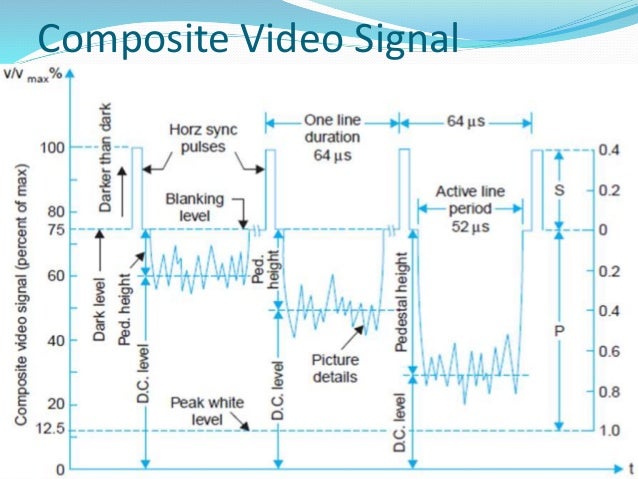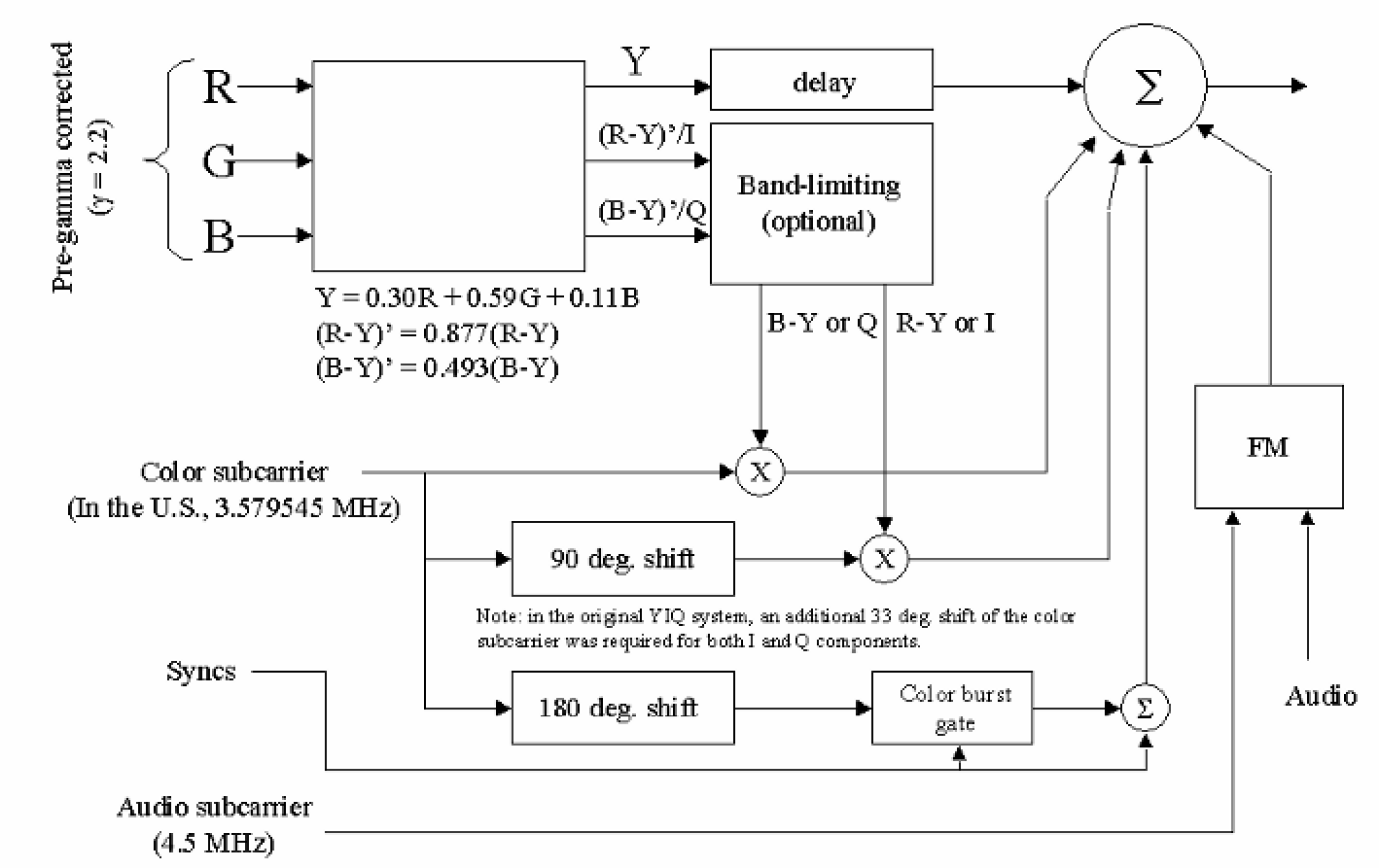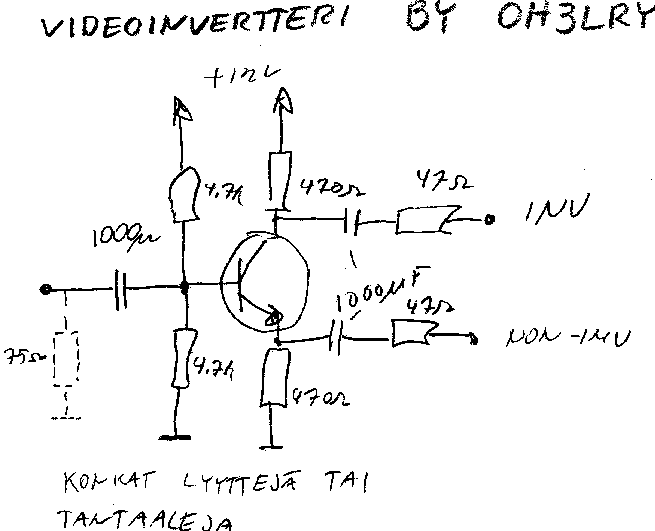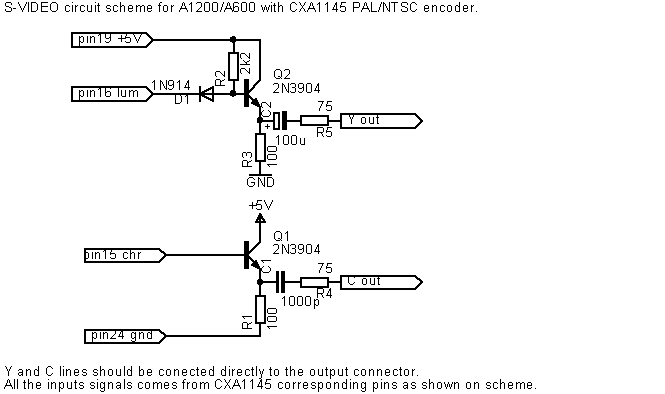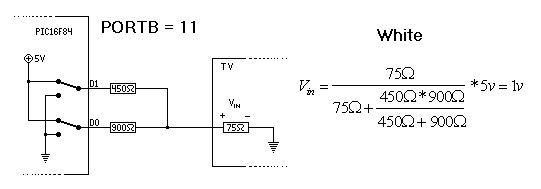Block Diagram Composite Video Signal Diagram

Luminance color difference to composite video conversion methods.
Block diagram composite video signal diagram. Build a vi to decompose the composite signal given by equation 4 8 into its individual frequency components. The sound signal is separately detected demodulated and amplified before feeding it to the loudspeaker. If the desired transfer function of the system is 2 2 cs s rs s s then gs is a 1 b s c 1 s d 322 s ss s ans. Composite video signal 1.
There is extensive pulse circuitry to ensure that the demodulated video is displayed correctly. Microcontroller test pattern generator. A simplified block diagram of the ntsc colour receiver is shown in diagram. A typical block diagram of a composite mono video.
Block diagrams of luminance y and color components ry by video signal to composite video conversion. This monitor was used with cga video interface cards and operated with a horizontal scan frequency of 15 75 khz and a vertical scan frequency of 60 hz. The block diagram of pal encoder is shown in figure it uses the gamma corrected rgb signals from the camera tube as input and produces the composite colour video signal at its output. Overall block diagram cvbs 3 21.
Figure 1shows a block diagram for a genlock which takes an sdi serial. Mpeg memory block diagram. Composite video signal 2. The block diagram of a system is shown in the figure.
2 2 cs s rs s s the block diagram can be converted into signal flow graph as shown in below. Page 46 block diagram 1. Composite video signal consist of camera signal corresponding to the desired picture information blanking pulses to make the retrace invisible synchronizing pulses to synchronize the transmitter and receiver scanning horizontal sync pulse vertical sync pulse their amplitudes are kept same but their duration are. Mt1389 audio output to pwm ic adat0 3 fig 13 1 3 19.
Monochrome television receiver block diagram as shown in figure 17 9 tv receivers use the superheterodyne principle. When a new signal is brought into a studio whether it is coming from a satellite receiver a camcorder or any other source the first thing to do is to synchronize it with the rest of the signals in the studio using a genlock circuit. It is based on a sampling frequency of 7500 hz with the number of samples being 400. 1 1 p gs s gs s individual loops.
The video signal was made by combining the red green blue and intensity video information into a single monochrome analog video signal. The composite signal in equation 4 8 consists of three sinusoids with frequencies f 1 hz f 2 hz f 3 hz and amplitudes a 1 a 2 a 3 respectively. The blanking pulses of the composite video signal drive the picture tube beyond. Monochrome television receiver block diagram.
Mc1374 based t volt transmitter. The gamma corrected rgb signals are applied to the y matrix which is a resistive network. Maxim video circuits application notes. The signal from the selected channel is processed in the usual way by the tuner if and video detector stages.

